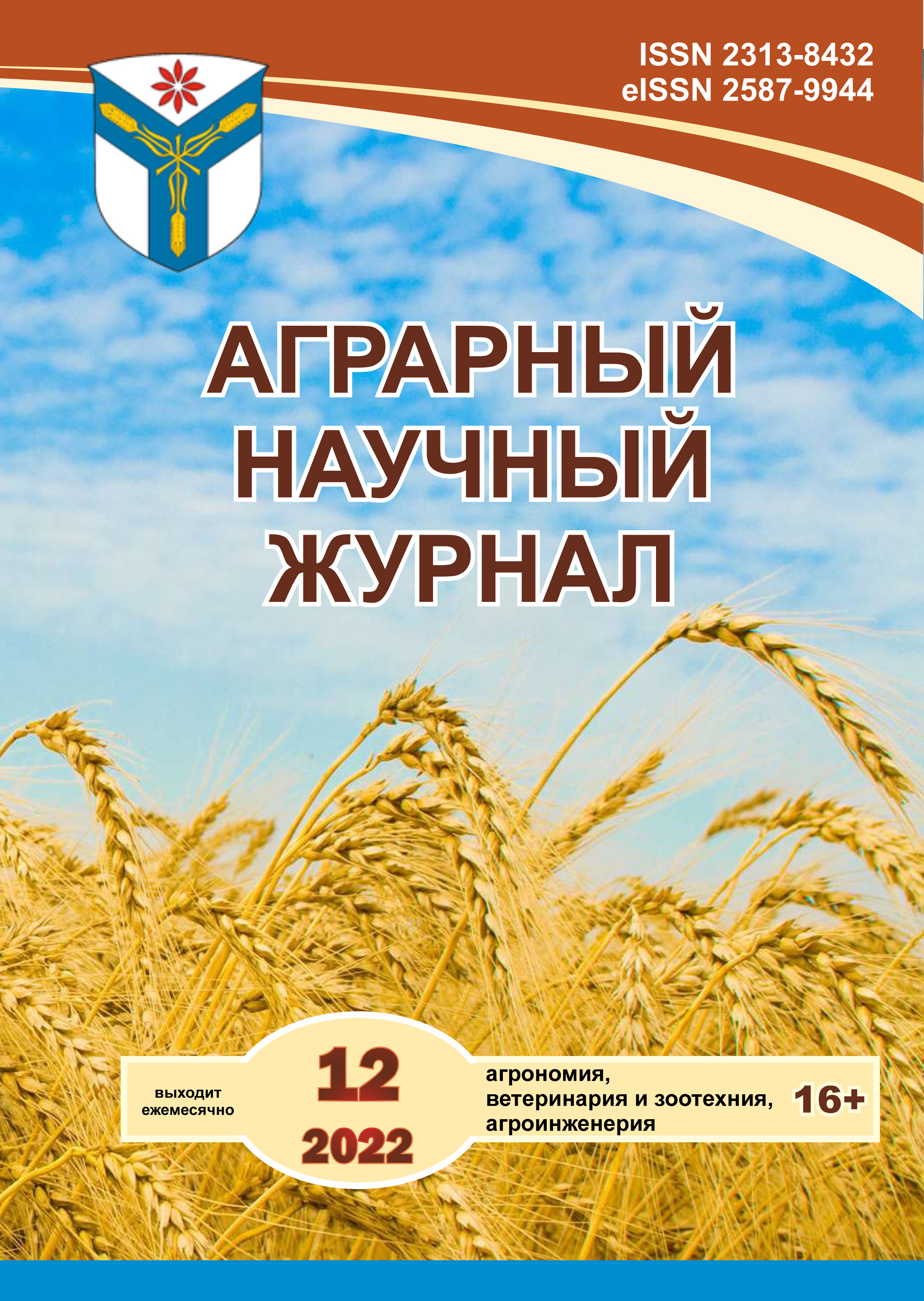Influence of seeding rates and herbicide application methods on weed infestation and oil radish seed yield
DOI:
https://doi.org/10.28983/asj.y2022i12pp41-45Keywords:
oilseed radish (Raphanus oleifera), seeding rates, herbicides, weed infestation, seed yieldAbstract
The article presents the results of the research carried out to determine the influence of seeding rates and herbicides application methods on the weed infestation and the seed yield of a new variety of oilseed radish in the conditions of the forest-steppe of the Central Federal District of Russia. The study was carried out during the period from 2019 to 2021 at the Lipetsk Rapeseed Research Institute. The scheme of a two-factor field experiment included the options where in certain conditions (factor A) – with or without herbicide application (in the phase of 5-7 true leaves), the seeding rates of germinating seeds (factor B) were studied - 0.5, 1.0; 1.5; 2.0; 2.5 million pieces/ha. The soil in the experimental plots was leached medium-thick heavy loamy chernozem. During the years of the experiment, the applications of herbicides significantly reduced the number of weeds in the agrocoenosis, and the decrease in the seeding rate caused the opposite effect. During the flowering phase, oilseed radish weed infestation, at the studied seeding rates in the conditions with no chemical plant protection products applied, decreased by 47-57%, and in the conditions when chemical plant protection products had been applied – the index decreased by 74-84%. At the same time, the differences in the number of weed plants between the studied seeding rates decreased. By the end of the growing season, the phytosanitary state of this crop generally improved, and this was most noticeable with the variants that included herbicide application. It has been determined that an increase in the seeding rate within the studied limits reduced the crop yield, and the chemical protection of the plants from weeds, on the contrary, significantly increased it. Consequently, the largest seed yield of a new variety of oilseed radish Alpha was provided by the cultivation technology, where a seeding rate was 0.5 million units/ha and herbicides were applied.
Downloads
References
Белик Н. Л. Биологические основы технологии возделывания рапса ярового и редьки масличной в Центральном Черноземье: дис. ... д-ра с.-х. наук: 06.01.09 / Белик Николай Лукьянович. Тамбов, 2002. 517 с.
Дорофеев Н. В., Пешкова А. А. Возделывание редьки масличной на семена в Иркутской области // Зерновое хозяйство. 2007. № 2.С. 31-32.
Квитко Г. П., Цицюра Т. В. Особенности формирования кормовой продуктивности сортов редьки масличной в зависимости от способа сева, нормы высева и удобрений // Вестн. Белорус. гос. с.-х. акад. 2013. № 3. С. 34-38.
Криворученко, Э. П. Разработка приемов агротехники редьки масличной на корм и семена в Южной зоне Амурской области: автореф. дис. … канд. с.-х. наук: 06.01.09 / Э. П. Криворученко. Хабаровск, 1994. 20 с.
Кшникаткина А. Н., Прахова Т. Я., Крылов А. П. Агроэкологическое изучение масличных культур семейства BRASSICACEAE в условиях Среднего Поволжья // Нива Поволжья. 2018. № 1 (46). С. 54-60.
Мастеров А. С., Виноградов Д. В., Романцевич Д. И. Обоснование элементов технологии возделывания редьки масличной на семена в условиях Северо-Востока Беларуси // Вестник Рязанского государственного агротехнологического университета им. П.А. Костычева. 2017. № 2(34). С. 29-35.
Мустафин А. М., В Харчебников. В. Влияние основных агротехнических приемов возделывания на семенную и кормовую продуктивность редьки масличной // Сибирский вестник сельскохозяйственной науки. 2010. № 3 (207). С. 26-31.
Пешкова А. А., Дорофеев Н. В. Биологические особенности и технология возделывания редьки масличной. Иркутск, 2008. 146 с.
Потапов Д. А., Полюдина Р. И., Харчебников В. В. Повышение кормовой ценности редьки масличной в Сибири // Кормопроизводство, продуктивность, долголетие и благополучие животных. Новосибирск, 2018. С. 190-192.
Пути повышения урожайности семян редьки масличной в Сибири / Н. Н. Кашеваров [и др.] // Адаптивное кормопроизводство. 2018. № 4. С. 9-16.
Радченко М. В. Оптимизация элементов технологии выращивания редьки масличной в условиях северо-восточной части лесостепи правобережной: дис. … канд. с.-х. наук: 06.01.09 / М. В. Радченко. Харьков, 2009. 17 с.
Романцевич Д. И., Мастеров А. С. Влияние норм высева на семенную продуктивность редьки масличной // Агроэкологические аспекты устойчивого развития АПК: материалы XIII Междунар. науч. конф. Брянск, 2016. С. 12-15.
Харчебников, В. В. Основные элементы технологии возделывания редьки масличной на семена и зеленую массу в лесостепи Новосибирского Приобья: дис. ... канд. с.-х. наук: 06.01.01 / Харчебников Виталий Владимирович. Новосибирск, 2012. 162 с.
Downloads
Published
Issue
Section
License
Copyright (c) 2022 The Agrarian Scientific Journal

This work is licensed under a Creative Commons Attribution-NonCommercial-NoDerivatives 4.0 International License.








